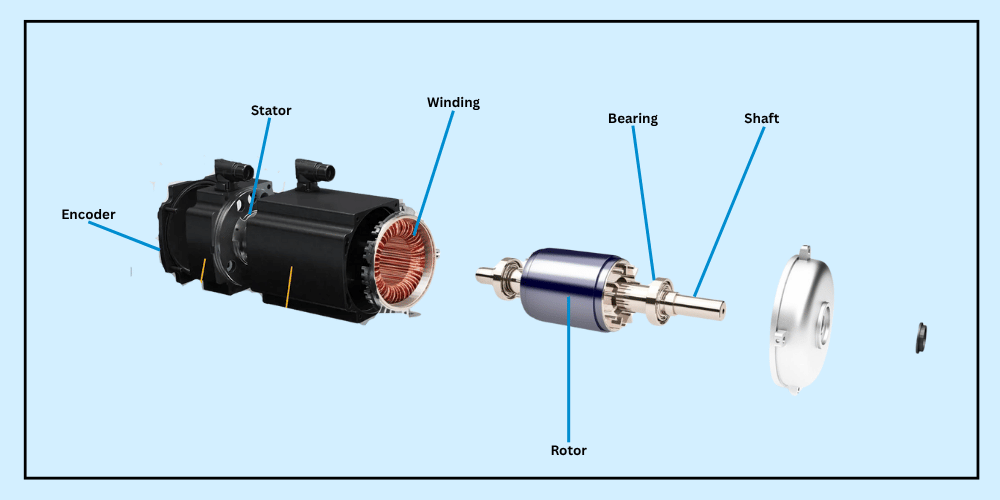A servo motor is designed for precise control of position, speed, and torque. Its accuracy and responsiveness come from a well-integrated system of electrical and mechanical components. Understanding these components of a servo motor helps you grasp how it performs so effectively in automation, robotics, and motion control systems.
Key Components of a Servo Motor
1. Stator
- The stationary outer part of the motor
- Contains electromagnetic coils that create a rotating magnetic field
- Generates the force needed to turn the rotor
2. Rotor
- The rotating shaft located inside the stator
- Connected to the load (gear, belt, robotic joint, etc.)
- Spins when electromagnetic force from the stator acts upon it
3. Encoder (Feedback Device)
- A critical component for closed-loop control
- Monitors the rotor’s position, speed, and direction
- Sends real-time feedback to the controller to ensure accuracy
4. Driver/Amplifier
- Acts as the power supply and brain of the servo motor
- Converts command signals into appropriate voltage and current
- Regulates motor behavior based on feedback from the encoder
5. Controller (External or Integrated)
- Sends target commands (like desired position or speed)
- Compares actual feedback with set values and adjusts outputs
- In advanced systems, it's often a PLC or motion controller
6. Bearings
- Allow smooth rotation of the rotor inside the stator
- Reduce friction and mechanical wear
- Enhance motor life and efficiency
7. Gearbox (Optional but Common)
- Adjusts torque and speed for specific applications
- Enables servo motors to handle heavier loads or slow, precise movements
- Often used in robotics, CNC machines, and conveyors
8. Housing/Frame
- The outer shell that protects internal components
- Built to withstand harsh environments—heat, vibration, dust, and moisture
- Usually made of aluminum or steel
Why These Components Matter
Each component of a servo motor plays a role in achieving:
- High precision
- Real-time feedback control
- Strong torque at low speeds
- Fast response time
- Reliable performance in demanding applications
Final Thoughts
The power of a servo motor lies not in one part but in the way all its components work together. From the rotor and stator to the encoder and driver, every piece is engineered for tight control, quick feedback, and flawless execution.
Whether you’re designing automation equipment or troubleshooting motion systems, knowing the components of a servo motor gives you a strong foundation to work with.

